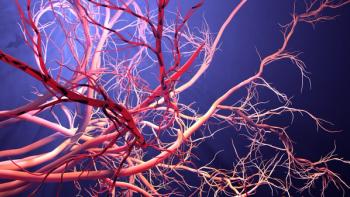
Tildrakizumab Shows Clinical Improvement of Difficult-to-Treat Areas in Psoriasis
Real-world patients with psoriasis demonstrated significant improvement in difficult-to-treat scalp, nail, palmoplantar, and genital disease manifestations with the IL-23 inhibitor tildrakizumab.
Tildrakizumab was associated with significant improvement in difficult-to-treat areas of
Associated with a considerable impact on patient psychological well-being and quality of life, psoriasis morbidity is further exacerbated when located in sensitive and difficult-to-treat areas, such as the face, scalp, palms and soles (palmoplantar), nails, and genital region.
“Since patients with psoriasis in difficult-to-treat locations often receive inadequate treatment, the burden of the disease is often worse than patients not affected by these types of lesions. In general, topical treatments are not usually effective necessitating alternative treatment strategies,” explained the study authors.
Substantial improvements in the management of moderate to severe psoriasis with biological therapies have also demonstrated effectiveness in some difficult-to-treat areas, but data remain limited.
“Although there is accumulating evidence of the effectiveness of tildrakizumab in randomized controlled trials and more recently in real-life studies, little evidence is currently available on the use of this biologic in patients burdened with psoriasis in difficult-to-treat areas,” they added.
Researchers conducted a 28-week retrospective cohort analysis of patients with moderate to severe psoriasis treated with
A total of 18 patients (mean [SD] age, 49.1 [12.7] years; mean [SD] disease duration, 14.3 [11.9] years; 61.1% male) with psoriasis localized in the genital region (n = 7), scalp (n = 6), nails (n = 5), and palmoplantar areas (n = 7) were assessed at weeks 0, 4, 12, and 28.
Safety and efficacy outcomes evaluated at each time point included the psoriasis area severity index (PASI), static Physician’s Global Assessment of Genitalia (sPGA-G), Psoriasis Scalp Severity Index (PSSI), Nail Area Psoriasis Severity Index (NAPSI), and the Palmoplantar Psoriasis Area and Severity Index (ppPASI).
Findings showed significant decreases in PASI of 73% and 79.1% at weeks 12 and 28, respectively, compared with baseline (mean PASI, 3.1 and 2.4 vs 11.5). Further improvements were observed with tildrakizumab in difficult-to-treat areas:
- sPGA-G score decreased from 3.3 at baseline to 0.8 at 12 weeks (93.9% decrease) and to 0.2 at week 28 (93.9% decrease)
- PSSI score decreased from 36.2 at baseline to 6 at 4 weeks (83.4% decrease) and to 1.8 and 2.7 at 12 and 28 weeks (95% and 92.5% decrease, respectively)
- NAPSI score decreased from 48.4 at baseline to 34.2 at 12 weeks (29.3% decrease) and to 15.7 at week 28 (67.6% decrease)
- ppPASI score decreased from 5.3 at baseline to 1.3 at week 12 (75.5% decrease), with complete clearance achieved by week 28
Researchers concluded that further long-term studies with a greater sample size are warranted to verify these preliminary findings.
Reference
Galluzzo M, Talamonti M, Cioni A, et al. Efficacy of tildrakizumab for the treatment of difficult-to-treat areas: scalp, nail, palmoplantar and genital psoriasis. J Clin Med. 2022;11(9):2631. doi:10.3390/jcm11092631
Newsletter
Stay ahead of policy, cost, and value—subscribe to AJMC for expert insights at the intersection of clinical care and health economics.













































